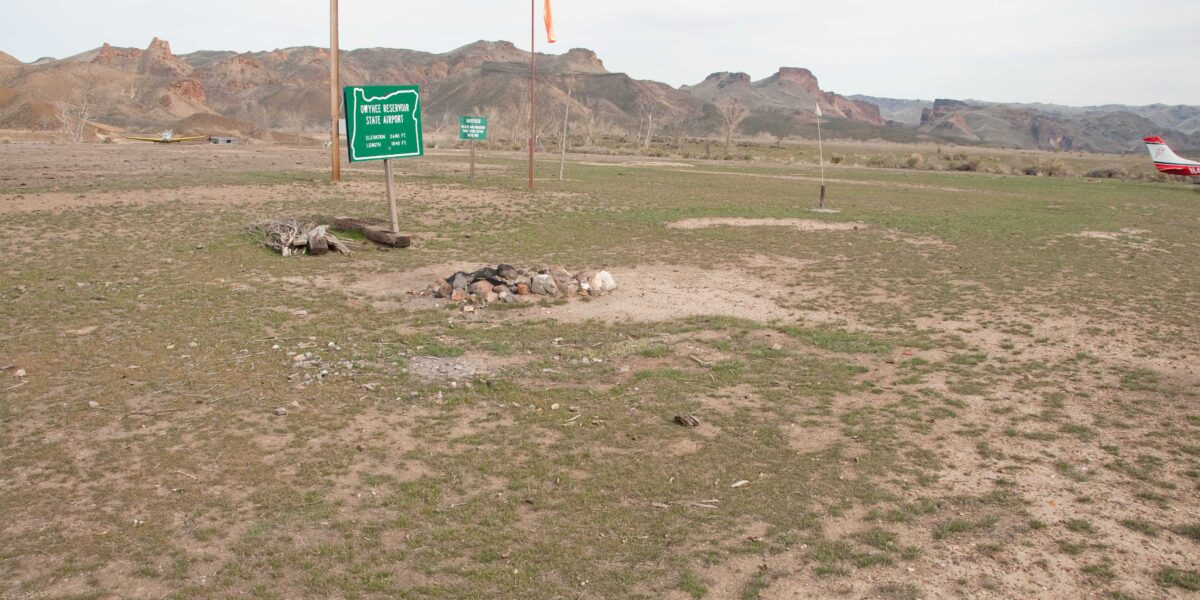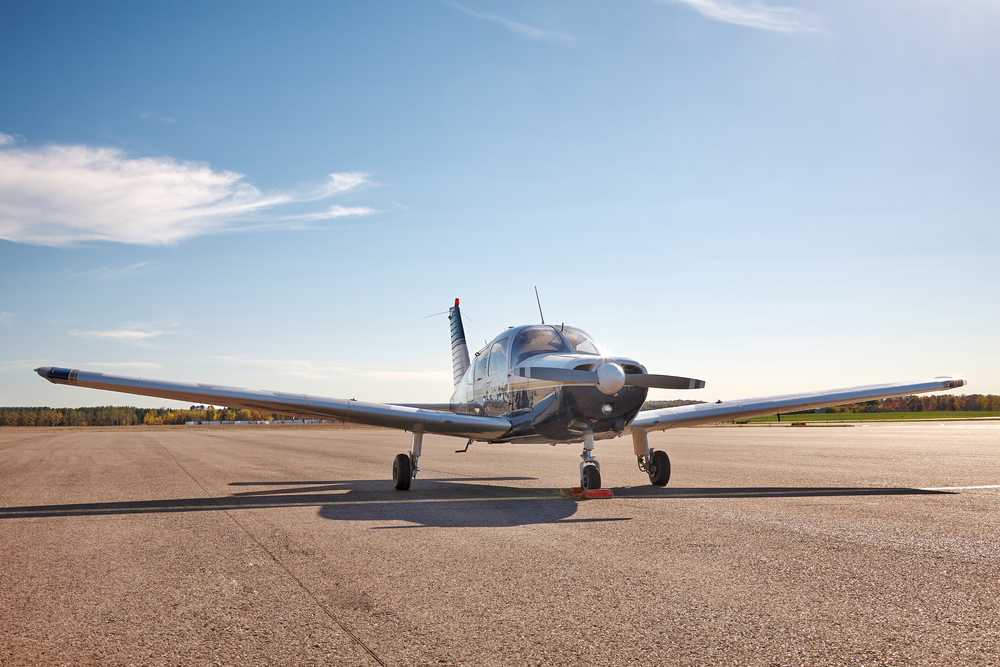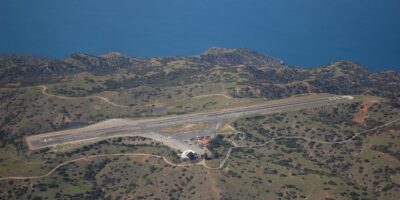Owyhee Reservoir sits way out in Nevada’s high desert near the Oregon border – I’m talking seriously remote. This BLM dirt strip gets you access to the reservoir, great fishing, and about a million acres of nothing. If you’re looking for isolation and don’t mind primitive conditions, this is your spot.
Quick Answer: Owyhee Reservoir (NV66) has a 3,200-foot dirt runway at 2,670 feet elevation in northern Nevada. Runs northeast-southwest, basically flat. BLM maintains it… sometimes. No services at all – bring fuel, water, everything. Open April through October. Call BLM Elko District at (775) 753-0200 before you go. Need experience with unimproved strips and desert flying. Tailwheel preferred, high-clearance nosewheel can work.
The Strip
You’re looking at 3,200 feet of dirt, maybe 50-60 feet wide. BLM grades it occasionally – condition varies wildly. Right after grading? Smooth and firm. Few months later? Washboards, ruts, weeds growing in. Elevation’s 2,670 feet. Runs northeast-southwest with basically no gradient.
No markings, no lights, no nothing. From the air it’s just a cleared strip next to the reservoir. Surface firmness depends on recent rain – stay away after heavy precipitation when it turns to mush. Rocks and debris show up on the runway sometimes. Parking’s primitive – just pull off onto the dirt. No tiedowns, so bring stakes and chains.
Landing Here
Overfly at 500-1,000 AGL to check the surface and look for wildlife. Wild horses, cattle, pronghorn – they all hang out here. No assigned CTAF, people use 122.9. Fly a normal pattern. Wind usually flows along the reservoir valley.
Keep your approach speeds normal – runway’s long enough for most GA planes. Aim for the first third so you’ve got room ahead. Dirt brakes great but kicks up dust that’ll blind you. Be ready for crosswinds – desert winds get strong and gusty. Most planes stop in 1,200-1,800 feet. Taxi slow and watch for rocks that’ll ding your prop.
Getting Out
Calculate density altitude first. Summer afternoons over 95°F push DA to 5,000-6,000 feet. Most 150-180 hp planes need 1,800-2,500 feet in those conditions. Use every inch of runway. Morning departures are way better with temps 20-30 degrees cooler.
Backtaxi the whole runway checking for new obstacles or surface issues. Turn around at the end using full width. Short-field technique gives you better margins. Roll and lift when ready. Terrain’s flat so you’ve got options if the engine acts up. Stay on runway heading till you’re climbing good, then turn. Desert thermals make it bumpy midday – expect rough air.
Finding It
Owyhee Reservoir’s about 20 miles southwest of Mountain City, Nevada, 30 southeast of Jordan Valley, Oregon. Big reservoir’s visible from miles away. GPS makes navigation easy. Nearest fuel’s at Elko (EKO, 85 miles southeast) or Boise (BOI, 100 northwest). Plan fuel carefully – nothing within 80 miles.
Visual nav works fine in clear conditions. But weather can go to hell fast with dust, smoke, or precipitation killing visibility. Carry charts and GPS. You’re in Class G airspace – unrestricted VFR ops. File a flight plan and update it when you get there. Remote location demands good communication discipline.
Camping and Activities
Camping’s primitive near the airport. BLM’s got vault toilets. Water comes from the reservoir – filter and treat it. No electricity, no fuel, no services. Nearest town (Mountain City, population like 75) has basically nothing. Bring everything – food, water, camping gear, emergency supplies, all of it.
Fishing’s excellent – smallmouth bass, crappie, catfish. Boat ramps exist around the reservoir. Good hiking and wildlife viewing. The remoteness is what draws people here. Most pilots spend 2-4 days camping and fishing. Desert environment’s harsh though – over 100°F in summer, below freezing in winter.
Weather
Strip operates April through October usually. Spring’s got variable weather with storms. Summer’s reliable VFR but stupid hot. Fall’s honestly the best – moderate temps, stable weather. Winter snow and ice shut it down November through March. Wind’s your main challenge – spring and summer bring 15-25 knots regularly, gusts to 35+.
No weather reporting at Owyhee – check Elko, Boise, or Winnemucca for regional trends. Desert weather changes fast. Afternoon thunderstorms pop up with no warning during monsoon season (July-August). Dust storms drop visibility to zero in minutes. Always have escape plans and fuel reserves. Isolation demands conservative decision-making.
What to Fly
Tailwheel’s preferred for dirt and primitive conditions. High-clearance nosewheel works but at higher risk. Minimum’s probably 150 hp, more’s better for hot high-DA conditions. Typical birds include 170s, 180s, 182s, 185s, Super Cubs, Maules, Huskies. 206s visit regularly.
Pull your wheel pants for dirt ops. Carry spare tires, tubes, tools. You’re on your own for field repairs. Bring tie-down stakes, chocks, engine covers. Survival gear should include water (minimum 2 gallons per person), food, shelter, fire starter, first aid. Satellite messenger or PLB’s essential – zero cell coverage. Nearest help’s 50+ miles away over rough roads.
Don’t Be Dumb
Owyhee’s remote high-desert backcountry requiring real preparation. The dirt strip, variable surface, and no services create genuine hazards. You should have experience with unimproved strips before trying this. Practice short-field and soft-field work at home. Desert flying techniques – density altitude management, hot weather ops – are essential.
Emergency response takes hours, maybe days. Bring comprehensive first aid. Tell someone your plans including when you’re coming back. File flight plans and close them when you leave. BLM sometimes closes the strip for maintenance or environmental stuff – call ahead. Weather, wildlife, remoteness all demand respect and conservative decisions. Owyhee rewards prepared pilots with outstanding fishing, spectacular desert scenery, and genuine wilderness solitude in one of Nevada’s most remote and beautiful areas.



Leave a Reply